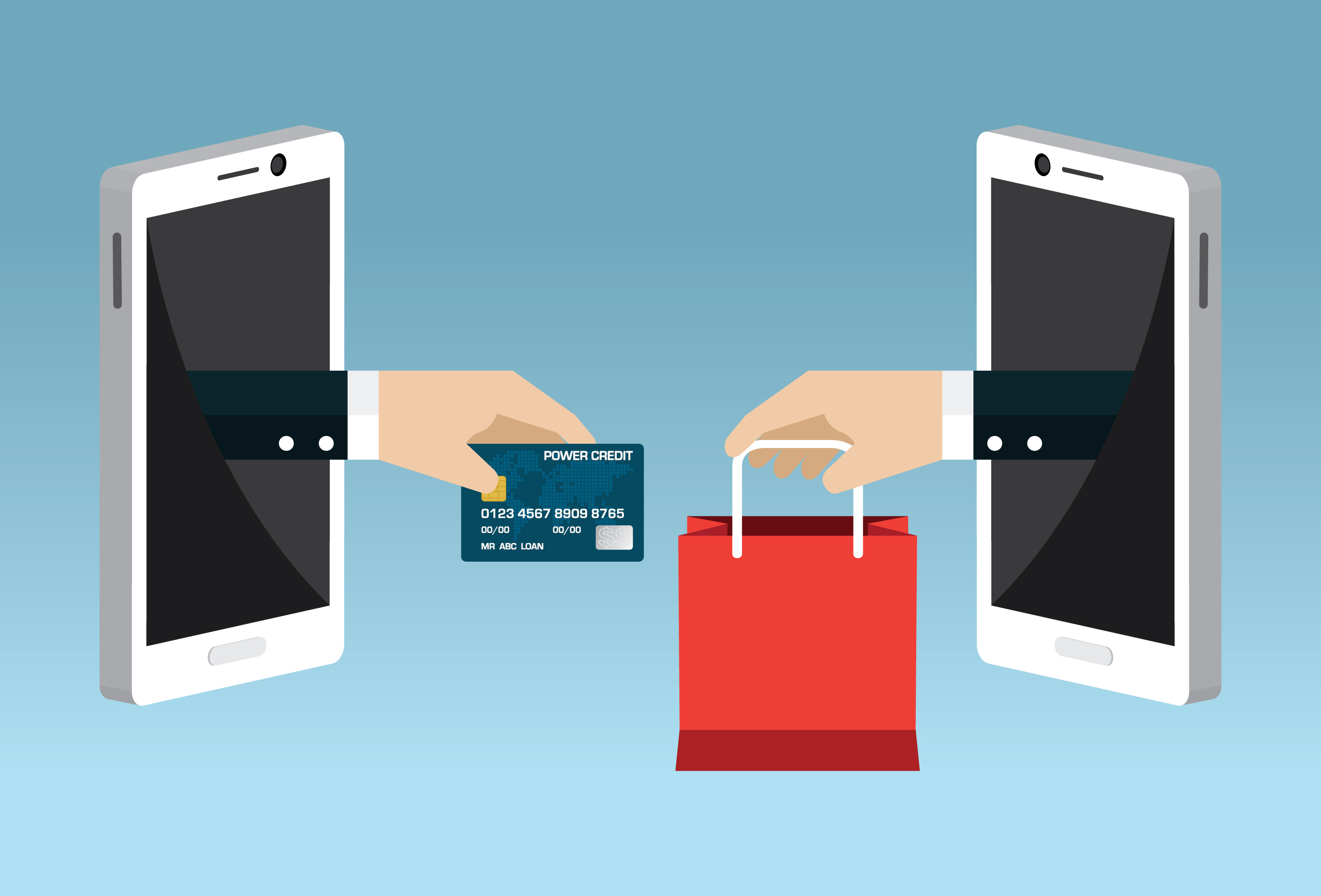
April 24, 2019
 by Jeremy Moser
by Jeremy Moser

With Amazon, paid ads, and social media at play, is it really wise to invest in search engine optimization and organic traffic in 2019?
You bet. The latest data on e-commerce marketing shows that the vast majority of purchases start with a simple search on Google. So if you’re only banking on paid search and social, you’re missing out on the majority of visitors. But not just any content will rank. Nearly 70% of that traffic gets funneled into results above the fold.
SEO, or search engine optimization, is the practice of using best practices to help a webpage rank higher on search engines such as Google and Bing to generate more organic traffic to a website. E-commerce SEO is all about having specific product pages rank highly on search engines, resulting in more organic traffic to your online store.
That means if you want any hope of generating organic traffic, you need to rank high. That’s where e-commerce SEO comes into play.
E-commerce SEO specifically helps online stores increase organic traffic to product pages and listings. Here are the best strategies to ensure your getting the most from your online store's content.
Content marketing, the lifeblood of SEO, can seem difficult in the e-commerce space. After all, what can you write about when you sell shoes? Or men’s clothing? If you haven’t done much research, topics can feel limited, boring, or even worthless. But that likely isn’t true.
Every single niche out there has people searching for information – and subsequently – an opportunity for your store to rank in the SERPs and build brand awareness.
When developing a niche content strategy, you’ll want to outline a few key factors:
Before we dive into how to establish those factors, let’s look at a brand example: Fitbit.
Fitbit sells everything and anything in relation to tech for active lifestyles. To reach their market, they focus on creating content that their target market is actively searching for. That includes topics like chronic pain and how to relieve it, or healthy meal ideas for active people.
These are great examples of top of the funnel brand awareness content. The content here isn’t heavily tied back to their actual products; rather, it serves to establish Fitbit as a top brand in the overarching health world. This is fantastic for new visitors who aren’t going to stick around to just hear about how amazing Fitbit products are. Fitbit takes it further by producing pieces for more than just brand awareness.
The image above is a prime example of content geared towards the bottom of the funnel traffic (and existing customers) who are on the cusp of buying from them.
Fitbit has a stellar framework in action here, working to first attract new organic visits with generalized fitness and health content, and then close the sale with targeted content relating directly to the products they sell.
To start your own e-commerce content strategy, you’ll need to outline the following content framework factors:
Content strategy for real growth is more than just putting post ideas on a calendar. Content for the sake of content is worthless.
Why? Competition is brutal. Case in point, this SERP outline for a keyword with just 250 searches a month:
Image courtesy of searchenginejournal.com
You’ll need much more than just topics to grow traffic.
Start by outlining your goals for the content. This will provide a clear path as to what content you need to create for your audience(s) and how to segment it based on intent and the buying journey.
Once you’ve got the groundwork laid for your content strategy, it’s time to find keywords that you can hone in on to fill content for those segments!
|
Related: Read about the difference of branding in B2B vs. B2C businesses to improve your e-commerce strategy! |
Believe it or not, keywords aren’t dead. People are always searching for new information and new products. These give you clear-cut chances to capitalize on pain points and points of interest within your target markets.
For e-commerce keyword research, most people make one big mistake: going for the big fish too quickly. It’s tempting to create content for a term like “basketball shoes,” but in reality, that’s way too competitive.
When you analyze the SERPs for it, you can infer that most people are either clicking on Google Shopping ads or stores that sell a wide variety of options.
These aren’t your money-making keywords despite how many searches they get per month. It’s extremely hard to build content around those keywords that people want to read. Instead, start segmenting your keyword research by funnel stage.
Image courtesy of searchengineland.com
Remember: to bring in more organic traffic, you’ll need more than just product-based keywords. You want to target what people are researching in your niche as well.
For the top of the funnel keywords, your focus is likely going to be long-tail topics and phrases that interest your niche. Sticking with the basketball shoes theme, topics would center around activities, tips, or content for basketball enthusiasts. This could be anything from ranking new recruits or providing a list of the best public basketball courts in a specific city.
The goal here is to be the first result on a given search for anything related to basketball.
|
TIP: Discover SEO Software to improve the ranking of websites in search engine result pages (SERP) without paying for placement. |
For instance, those terms above have moderate volumes and low difficulty. Or maybe you want to focus your efforts on tips and tricks:
This is a great start for a top of the funnel post that focuses on providing value to searchers and building passive brand awareness. Now, let’s generate some ideas for the middle of the funnel.
Middle of the funnel keywords are often more directed as product features and benefits, rather than generalized themes in an overarching space.
For example, a post comparing features of different basketball shoes is a great middle of the funnel post.
Or, a post about key features that you should look for in a well-constructed basketball shoe:
These target users in the research phase who are close to buying, but need more information before making a purchase.
You shouldn’t be directly selling your products here, but rather comparing and contrasting what you offer and what those users should be looking to get for their money. I.e. selling without selling.
A great place to start is by utilizing Google’s auto suggest feature.
The search terms are two fantastic content ideas that are being searched often. Create a quiz about basketball shoes to help users determine what fit is best for them, or dive into a post about different grip types and when they are best utilized. For more ideas, scroll to the bottom of the page and see what users are also searching for.
E-commerce keyword research doesn’t have to be a pain. Just start with Google and enter general topics based on funnel stages. From there, select long-tail searches and write amazing content around them!
Bottom of the funnel keywords indicate that a person is right on the cusp of buying a product. It’s often branded searches, like “Nike basketball shoes” or “red basketball shoes” that signify a high intent to purchase. Where can you come up with these bottom of the funnel ideas? Amazon is an amazing place to start.
Using Amazon’s auto-suggest feature will show you common searches stemming from a short keyword. These bottom of the funnel keywords are the perfect keywords to begin optimizing for on-page SEO.
On-page SEO is optimizing your web pages (including blog posts and product/category pages) for a given keyword in attempts to rank higher. There are a few key factors you can optimize on your blog pages and product pages to improve rankings, user experience, and more.
Here are a few key steps to help you master e-commerce on-page SEO:
When it comes to on-page SEO, it’s best to start from the top down. First, you’ll want to optimize your titles, meta descriptions, and URLs.
While these aren’t direct ranking factors, they help you stand out on search engine results pages (SERPs), making it more likely for you to generate clicks. Plus, CTR is an indirect ranking factor!
Here are some key tips to optimize all three:
H1 and H2 tags signify your headline and sub-headers in a given piece of content.
Image courtesy of sitelogicmarketing.com
Not only do these pack a slight SEO benefit by including keywords, but they also help to organize your content and make it user-friendly. This works to boost the amount of dwell time on your site, reducing bounce rates and providing good signals to Google that your content is solving a user problem.
Lacking these title tags can lead to unstructured content that crawlers and people struggle to read.
Only use one H1 tag per post, and make it keyword focused. However, use multiple H2 tags per post (or one on product pages) to provide order and structure in your content. Insert your target keyword if possible.
External links are links on your page that direct users to another site, whereas internal links point to other pages on your own site. So, why on earth would you want to link out to others? Well, Google uses external links to determine the relevance and authority of your own page.
If you cite great sources that have a high page authority, Google can determine relevance. If you don’t, you miss out on this great on-page benefit. On top of that, internal links are great for pointing users to other helpful content on your own site!
Here are some guidelines to follow to maximize the impact of linking:
Building backlinks for your e-commerce store is a fantastic way to increase site authority and drive relevant traffic from other sites in your niche. But doing so isn’t a cakewalk. It takes time, effort, and persistence.
According to blogging statistics, companies with active blogs receive 97 percent more links to their website than those without active blogs.
Here are three ways you can start to build links for your online store today:
One passive way to generate more backlinks to your online store is to develop in-depth content and custom visuals. Visuals are a key part of any good piece of content. Bloggers and content creators in any and every niche use images to solidify their points and make content more digestible.
If you provide custom images, your chances of getting a backlink are much higher.
Most writers will cite the source of images they use in their content, giving you a valuable link and brand mention with zero outreach needed. A great example of this is Bonobos, who writes content about style choices for holidays, outings, and more.
Using custom photography and shots, their images are constantly cited by other blogs, giving them free brand mentions and backlinks.
Online reviews are a huge source of both positive social proof for your brand and direct referral sales. Chances are, when someone is starting their journey in your niche, they’ll search something like “best [insert product name].” This often turns up review pages where bloggers and influencers will compare and contrast multiple different products in that space.
Getting in on these review articles can help you land a backlink and mention on high profile sites ranking on the first page of Google for free.
To start an influencer marketing campaign, run a Google search within your niche and compile a list of the top ranking review posts. Head to each page and look for contact info if you don’t see your product reviewed on that given article. If you can’t find direct contact info, look for the writer and connect with them on social media.
Consider offering them a free sample (if possible) of your product to see if they like it. The trick here is to not be pushy and directly ask for a review just yet. These bloggers likely get dozens of requests for reviews. Instead, approach it by giving value in the form of free product samples. If you truly have a great product, reviews and links will follow.
If you’ve grown your online store quickly, or found a new, groundbreaking method for growth, guest blogging could be your best bet for landing brand mentions and links. Yes, guest blogging is even popular in the e-commerce, B2C space. There are countless sites that feature interviews with successful e-commerce stores.
Beyond case studies, you can conduct outreach to popular e-commerce and online store blogs to share your journey, story, and expertise.
Doing all the above will help you generate tons of traffic to your online store via better content, outreach, and SEO. But without a properly functioning site, it’s all for nothing. According to Google, the average site in any industry is far too slow.
Image courtesy of Think With Google
Couple that with the fact that tons of your traffic is likely using a VPN, which often impacts internet speed, to protect their valuable credit card data from hackers, their load time becomes even worse.
While just a few seconds doesn’t seem like a big deal, it surely is. Every second added to your page speed results in higher bounce rates, meaning your traffic is leaving before even giving you a chance.
Image courtesy of Think With Google
Both page speed and bounce rate are dwell time factors that impact your ability to rank on search engines, too. If Google notices that users are clicking your post on search engines, but bouncing immediately, your content won’t rank first.
To remedy this issue, use a tool like Google’s PageSpeed Insights tool to test your speed. If it’s above three seconds, improve it by following their recommendations.
Beyond just page speed, uptime is a big factor for bounce rates. Uptime is defined as: the total time that your website is up and running without problems.
Simple enough right? Uptime and load time are very dependent on what web hosting provider you use.
If your uptime looks like this:
...you are likely losing money. Amazon loses over $66,000 per minute their site is down. Over the course of a year, outages of hours or minutes can add up to significant losses in profit and revenue.
Take a hard look at your current hosting provider. If performance is subpar, it’s time to switch. Your organic traffic won’t return if you don’t.
Search engine optimization isn’t only for software products and B2B. B2C and e-commerce stores in particular can benefit greatly from SEO. Having better SEO leads to more organic traffic. And more organic traffic means less money on ads and more money in your pocket. Follow the steps outlined here to dominate SEO in 2019 for your online store!
Ready to learn more on how to drive more awareness to your online store? Discover the value retail chatbots bring to online stores.
Jeremy is the co-founder & CEO at uSERP, a digital PR and SEO agency. He also buys and builds SaaS companies like Wordable and writes for publications like Entrepreneur and Search Engine Journal.
Are you looking to start an e-commerce business? The time couldn’t be better.
 by Robert Brandl
by Robert Brandl
Technical SEO. A short phrase that has been known to strike fear into the hearts of SEOs and...
 by Ken Marshall
by Ken Marshall
Are you looking to start an e-commerce business? The time couldn’t be better.
 by Robert Brandl
by Robert Brandl
Never miss a post.
Subscribe to keep your fingers on the tech pulse.



